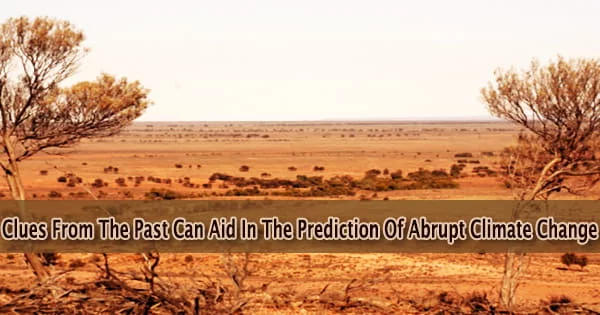Climate ‘tipping points’ can be better understood and forecast using data from the distant past, according to new research.
The current state of knowledge on tipping points, which occur when the climate system crosses a threshold beyond which major, often irreversible changes occur, is limited. This is due to the fact that such an occurrence has not occurred in recent memory, and certainly not since scientists began keeping track of climate data
When the climate system is pushed to transition at a rate that is governed by the energy balance of the climate system and is faster than the rate of change of the external forcing, an abrupt climate change occurs, but it may include sudden forcing events such as meteorite impacts.
Earth System models, which are frequently used to predict climate, are based on our knowledge of the physical, chemical, and biological processes that interact to determine the environment of our planet.
Scientists are aware, however, that these models do not provide a complete picture because they fail to reproduce known previous climate occurrences.
Typically, tipping points are assumed to occur when an equilibrium loses its stability as external variables steadily change. However, because complex environmental systems are never in equilibrium, this appealingly simplistic concept puts us on the wrong foot when it comes to understanding a variety of rapid transitions in the climate or ecosystems.
Climate modelling is the only way we have to predict future climate change, but when models are developed they are only evaluated with weather observations from the past 150 years or so. This means we have no way to verify their predictions of potential abrupt change the risks of which are only likely to increase as the planet warms. Palaeoclimate records of abrupt climate changes from the deeper past allow us overcome this problem.
Dr. Peter Hopcroft
Researchers from the University of Birmingham and the University of Bristol show how knowledge of climate reconstructions from thousands of years ago can be used to fine-tune Earth System models to provide a more accurate understanding of climate system thresholds in a new study published in Proceedings of the National Academy of Sciences.
The majority of abrupt climatic adjustments are presumably the result of abrupt circulation shifts, similar to a flood cutting a new river channel. The most well-known instances are the dozens of shutdowns of the North Atlantic Ocean’s Meridional Overturning Circulation during the last ice age, which had an impact on climate around the world.
Senior author, Dr. Peter Hopcroft, of the University of Birmingham’s School of Geography, Earth and Environmental Sciences, said: “Climate modelling is the only way we have to predict future climate change, but when models are developed they are only evaluated with weather observations from the past 150 years or so. This means we have no way to verify their predictions of potential abrupt change the risks of which are only likely to increase as the planet warms. Palaeoclimate records of abrupt climate changes from the deeper past allow us overcome this problem.”
The researchers concentrated their research on one significant example: the ‘greening’ and subsequent fast desertification of the Sahara, which occurred roughly 6,000 years ago during the mid-Holocene epoch.
They were able to show how a standard climate model could anticipate the Sahara’s metamorphosis into a savannah, which was characterised by increased plant coverage, development of lakes, and, most critically, greater rainfall, by putting data from fossil pollen and sedimentary records into the model.
The model’s results were then compared to studies of marine sediment records from the region, demonstrating how well it reproduced a rapid return to desert conditions over the Sahara. “We now need to apply these methods to other models to test how universal the results might be,” added Dr. Hopcroft.
“But by demonstrating how paleoclimate information can be used to improve the way models can simulate past abrupt climate change, we hope that we can begin to increase our confidence in future projections of abrupt events.”





